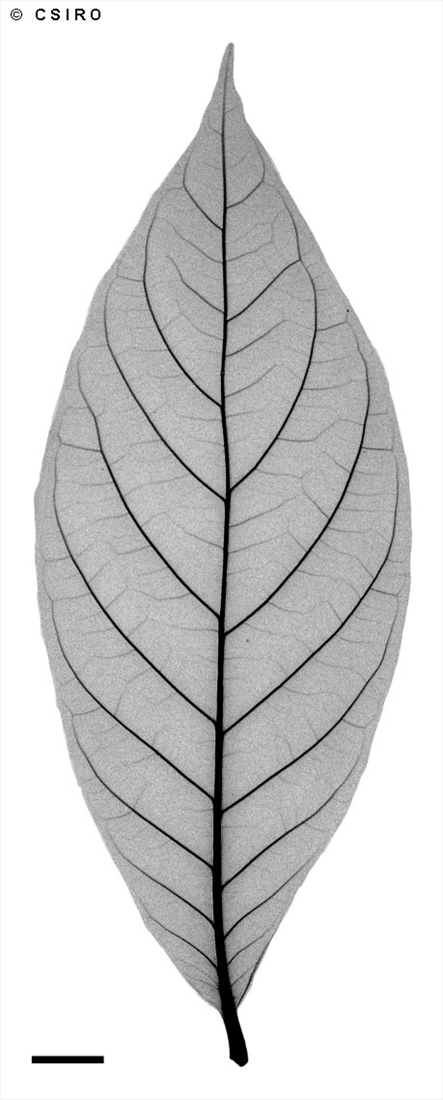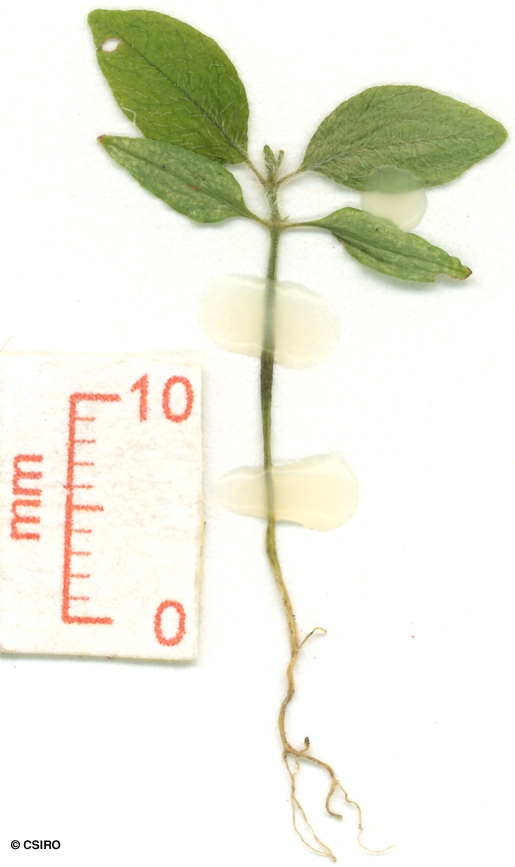Australian Tropical Rainforest Plants - Online edition
Antirhea sp. Mt Lewis (B.Gray 5733)



Provisional HISPID phrase name.
Occasionally grows into a small tree but also flowers and fruits as a shrub.
Stipules triangular, about 9-12 x 4 mm. Inner surface densely clothed in white prostrate hairs interspersed with dark brown, linear structures (glands?). Leaf blades about 9-12 x 3.5-5 cm. Petioles about 0.8-0.9 cm long. Lateral veins about 9-12 curving inside the blade margin but not forming definite loops. Leaf blades hairy on both the upper and lower surfaces. Domatia (if present) are tufts of hairs and are more obvious at forks on the lateral veins rather than along the midrib. Reticulate venation fine and parallel like ploughed fields on a aerial photograph.
Cotyledons broadly lanceolate, about 8 x 3.5 mm. Petioles and hypocotyl papillose. First pair of leaves elliptic, base obtuse, both the upper and lower surface clothed in long translucent hairs. Reticulate venation close and parallel. At the tenth leaf stage: leaf blade clothed in hairs on both the upper and lower surfaces, lateral veins about 7 or 8 on each side of the midrib and forming loops just inside the blade margin. Petiole hairy, red, about 5-7 mm long. Stipules hairy, triangular, about 4 mm long. tapering to a fine point at the apex. Stem clothed in erect and contorted hairs. Seed germination time 42 days.
Endemic to NEQ. Altitudinal range from 500-1400 m. Grows as an understory plant in undisturbed upland and mountain rain forest on granite.





